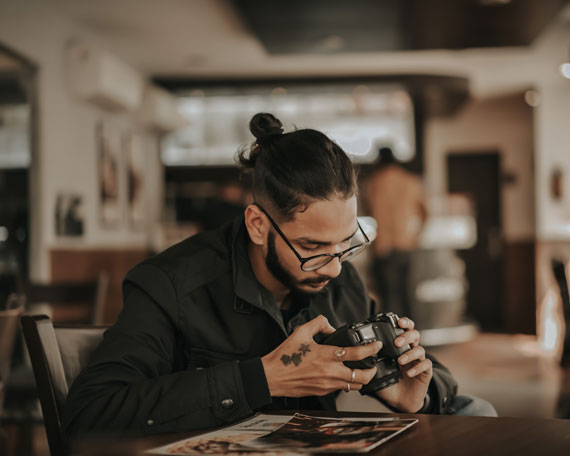When we talk about “noise” in the world of photography, we’re not referring to audible sound. Instead, this term signifies something entirely different. Noise in photography denotes the visual distortion seen in an image, often manifesting as random specks or grain. But what exactly causes it, and how can we minimize it? Let’s delve deep into understanding the phenomenon of noise in photography.

Photo captured by Dollar Gill
1. Defining Noise in Photography
In simple terms, photographic noise can be likened to the ‘static’ or ‘snow’ you might remember seeing on old televisions when the signal was weak. It appears as tiny, irregular colored pixels or specks scattered throughout an image, giving it a coarse, grainy look. Noise can make your photos look less sharp and degrade the overall quality.
There are two types of noise that commonly occur in digital photography – luminance and chrominance noise. Luminance noise affects the brightness of pixels, producing a grainy effect akin to film grain, whereas chrominance noise results in random color pixels appearing in the image.
2. Causes of Noise
There are several reasons noise can occur in your digital images. The most common culprits are high ISO settings, long exposures, and inadequate lighting.
- High ISO settings: ISO measures the sensitivity of your camera’s sensor to light. A higher ISO value amplifies the sensor’s response to light, helping to capture images in low-light conditions without using a flash or tripod. However, this amplification process also magnifies the inherent electronic noise in the sensor, resulting in a noisier image.
- Long exposures: Long exposure photography involves keeping your camera’s shutter open for a prolonged period, which can result in noise. As the sensor of the camera continues to record light, it also heats up, and this increase in temperature can cause digital noise.
- Inadequate lighting: Underexposing your photos, either intentionally or due to poor lighting conditions, can also contribute to noise. When you try to brighten such images in post-processing, the noise gets amplified along with the brightness.
3. Managing Noise in Your Photos
While you cannot completely avoid noise, there are techniques to manage it effectively.
- Optimum ISO Settings: As a rule of thumb, it’s best to stick to the lowest possible ISO setting that allows you to adequately expose your image. Modern cameras perform very well at higher ISOs, but it’s still wise to stay as low as possible to reduce the risk of noise.
- Correct Exposure: It’s always better to get your exposure right in-camera. Underexposing your photo and trying to fix it in post-processing is a sure way to introduce noise.
- Use Noise Reduction Software: Many software tools can help reduce noise in post-processing. Such as Topaz Photo AI or Lightroom and Photoshop.
4. Embracing the Noise
While noise is generally seen as undesirable, it’s not always a bad thing. When used creatively, it can add a sense of atmosphere, mood, or a retro aesthetic to your images. It’s all about your vision as an artist and how you want to express it.
Noise in photography is often seen as an unwelcome guest, but with the right understanding, you can control and sometimes even embrace it. Photography, at its core, is about capturing light, and noise is part of this process. So the next time you see those grainy specks in your images, remember – it’s just your camera’s unique way of recording the world around you.
For Help with Noise Reduction:
In photo editing news, Topaz Photo AI was recently updated; version 1.3.7 introduces substantially improved noise reduction for non-raw image formats like jpeg, tiff, and png, along with other overall improvements. The company has marked it down $40 off for a short time to celebrate the update if you want to try it out.
Sharpen, remove noise, and increase the resolution of your photos with tomorrow’s technology. Topaz Photo AI supercharges your image quality so you can focus on the creative part of photography.
Deal ending soon: Topaz Photo AI at $40 Off
- - - - - - - - - - - - - - - - - - - - - - - - - - - - - - - - - - - - - - - - - - - - - - - - - - - - - - - - - - - - - - - - - - - - - - - - - -
Did you appreciate this newsletter? Please help us keep it going by Joining Our Patreon Supporters
What are your thoughts on this article? Join the discussion on our Facebook Page
PictureCorrect subscribers can also learn more today with our #1 bestseller: The Photography Tutorial eBook
- - - - - - - - - - - - - - - - - - - - - - - - - - - - - - - - - - - - - - - - - - - - - - - - - - - - - - - - - - - - - - - - - - - - - - - - - -
The post What is Noise in Photography? appeared first on PictureCorrect.
from PictureCorrect https://ift.tt/iRALmu7
via IFTTT







0 kommenttia:
Lähetä kommentti